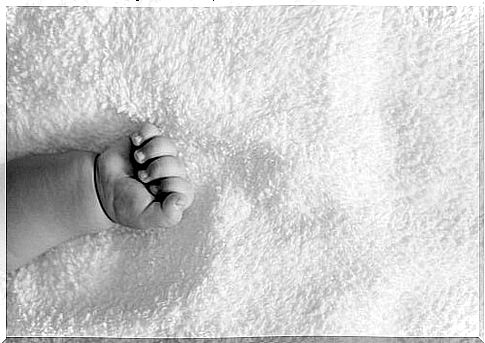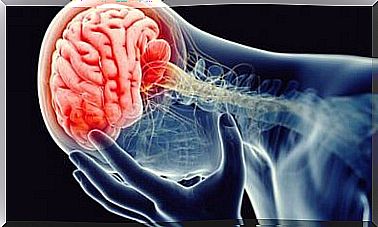Marasmus: The Importance Of Affection In Early Childhood

Affection and attachment ties are necessary for the proper development of the baby, and the separation of attachment figures, depending on the time and duration, can be devastating.
René Spitz studied psychological alterations in institutionalized or hospitalized children separated from their mothers, and found that in severe cases death from marasmus could be achieved.
John Bowlby studied how this bond between mother and baby was formed and Mary Ainsworth described the different attachment patterns. In this article we will review his work and Spitz’s discoveries.

Attachment. Definition, importance and patterns of attachment
Attachment is a strong affective bond that is established between the child and the attachment figure (usually the mother), which prompts them to stay together. It is important to encourage exploration of the environment and facilitate learning, and to promote correct physical and mental development.
John Bowlby studied how the attachment bond is formed and the phases of its development. It is not until stage 3, after 7 months, when the attachment itself is formed and separation anxiety and anguish before the stranger begin to appear. In the two previous stages, the child may have a preference for one caregiver over another, but does not protest the separation.
Mary Ainsworth designed a laboratory situation, called the Strange Situation, that allowed us to study the separations between children and their attachment figures in a controlled way. Observing the behavior of the children before the separation and before the reunion, he was able to describe three attachment patterns:
- Group A: Insecure attachment avoidant / rejecting / elusive type.
- Group B: Secure attachment.
- Group C: Insecure attachment of the ambivalent / resistant type.
It is considered that these attachment patterns are universal and appear in different cultures. A fourth type of attachment was later identified, disorganized / disoriented attachment (Group D).
Detachment of attachment figures: short-term effects
The separation of the child from the attachment figures before 6 months does not seem to cause so many difficulties, since the attachment is not yet fully established. However, between 6 months and 2 years, children are especially vulnerable to separation anxiety.
Bowlby studied the effects of short-term separation and the evolution of anxiety-depressive symptoms, and described three phases:
- Protest phase. It lasts between an hour and a week and begins when the child becomes aware that he is alone. It is characterized by behaviors of active struggle to recover the attachment figure, call signals (crying, screaming …) and refusal of the help of other people. If a reunion occurs, attachment behaviors intensify.
- Ambivalence or despair phase. The child manifests increased anxiety and hopelessness and may present regressive behaviors. Faced with the reunion, he may act with disinterest or even hostility.
- Adaptation phase. The child adjusts to the new situation and may be able to form new bonds with the new caregivers.
Long-term separation effects: anaclitic depression, hospitalism, and marasmus
In cases where the child cannot adapt to the loss, serious consequences can occur, such as intellectual retardation, socialization problems and even mortality.
Spitz studied that early separation from the mother could cause various psychogenic illnesses.
His studies are based on the direct observation of institutionalized children or children hospitalized for long periods of time. He also made a comparison between the development of children raised in institutions and children raised in prisons of women with their mothers.
The anaclitic depression is a type of depression caused by partial emotional deprivation, ie between 3 and 5 months. The symptoms may disappear a few months after resuming the affective relationship with the mother, with her attachment figure, or when they are adopted and form new bonds.
It is also known as hospitalism syndrome , because it was observed in children who had been abandoned at the doors of an institution that could take care of them (hospital, orphanage, convent …).
The term hospitalism is used to describe profound physical and psychological disturbances in children who have been abandoned or who have been hospitalized for a long period of time.
In this environment and under these conditions, it is common for the depressive picture to become chronic and cognitive and social problems develop. Among the most important alterations described by Spitz in this table are:
- Delayed body development.
- Delay of manual skill.
- Less use of language.
- Low resistance to diseases.
In the event that the affective deprivation is total, the picture can evolve to produce marasmus, which can lead to the death of the child. These children show extreme thinness and nutritional and emotional deficits.
Why can marasmus produce death?
Marasmus, taking its medical meaning, is a type of extreme malnutrition, which occurs before 18 months because the mother stops feeding the baby. The nutritional deficit is so serious that it can lead to death if it is not treated in time and the associated complications are not solved.
However, it has been observed that it is not only caused by a nutritional deficit, but that the total absence of affection in babies could also cause marasmus . Institutionalized children often had no opportunity to bond.

Crying, agitation, hopelessness, and other developmental delays were followed by a break in crying, a blank stare, a lack of reactivity to the environment, long periods of sleep, and a total loss of appetite. It is as if the children were fading little by little.
Thanks to Spitz’s studies, a reform was made in the conditions of hospitalization and institutionalization of children. Their work showed that, no matter how much the institutionalized children had their nutritional needs covered, there were other equally important needs that, when neglected or not covered, became an obstacle to their development.









